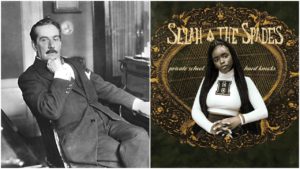
Opera Meets Film: How ‘Selah and the Spades’ Use of Puccini’s ‘La Bohème’ Amplifies One Scene’s Emotional Construction
By David Salazar“Opera Meets Film” is a feature dedicated to exploring the way that opera has been employed in cinema. We will select a section or a film in its entirety, highlighting the impact that utilizing the operatic form or sections from an opera can alter our perception of a film that we are viewing. This week’s installment features “Selah and the Spades (MINOR SPOILERS).”
A few years ago, we published a piece on a very subtle use of opera in the blockbuster “Guardians of the Galaxy.” In that example, the use of opera was little more than window dressing for a scene, and yet that subtle inclusion subconsciously worked on the viewer in exploring character and setting.
A similar trick is pulled in “Selah and the Spades,” fitting right into the overall structural approach of the film. “Selah” is an interesting blend of a teenage drama meshed with a gangster film, and subtle thriller. It’s a lot of things at once, creating a constant sense of exploration for the viewer, as they view the world through Selah and then Paloma’s, Selah’s (closest friend) perspectives. Selah’s mindset is firm and set while Paloma is constantly exploring as she adapts to the trappings of this new school. So often, we see something through Selah’s perspective, only to see a different angle when Paloma’s point-of-view takes over.
Nowhere is this more present than in the interactions with Bobby, one of the other “gang” leaders in the school. As presented early on from Selah’s perspective, Bobby is an antagonistic force, an enemy, someone to keep an eye out for. The audience is conditioned to maintain this perspective throughout most of the film, until Paloma confronts Bobby one-on-one in a scene late in the film when things have perhaps gotten a bit too out-of-hand between the two characters.
The entire scene takes place in a dressing room in the theater. Bobby and her clique have been established as a theater nerds so by default, this setting is Bobby’s domain and comes to represent her character. When Paloma confronts Bobby, Selah’s biggest rival, in the dressing room, Bobby immediately contests Paloma’s understanding of who Selah is, challenging her with a story that reveals Selah’s questionable character. Throughout this scene, we hear, very faintly, music from Puccini’s “La Bohème,” specifically “Donde lieta uscì.” While the music itself might not be immediately discernible, the fact that it is opera immediately strikes a chord with any listener.
Being the only opera excerpt in the film, it immediately has an effect on the viewer in the most subtle of ways. The entire scene is constructed on this subdued nature. Despite a horrid truth taking place, the camera doesn’t move, the characters don’t move, Bobby barely looks at Paloma, and the tension doesn’t build in any direct means; yet the scene’s impact is intense nonetheless as Bobby reveals the layers of Selah’s character and her ultimate betrayal. Even if you can’t make out “Donde lieta” as the musical excerpt being performed, the emotional bite of the piece correlates directly with the content of Bobby’s story and the disappointment etched on Paloma’s face as she grapples with what all this means for her and her relationship with Selah. Also worthy of note is that you never once question opera suddenly materializing in the film out of nowhere; we are in a theater so it makes sense. Even if it feels overly obvious, the fact that the music doesn’t take centerstage, dulls any sense of cliché.
The effect is powerful and there is no doubt that the choice to diminish the music’s presence works. You are cognizant of it on both an intellectual and emotional level, but it is distant enough so as to not force your emotions. It’s a masterstroke of scene construction that works alongside the other layers to get the audience to a specific emotional destination without forcing them there.
Categories
Opera Meets Film

